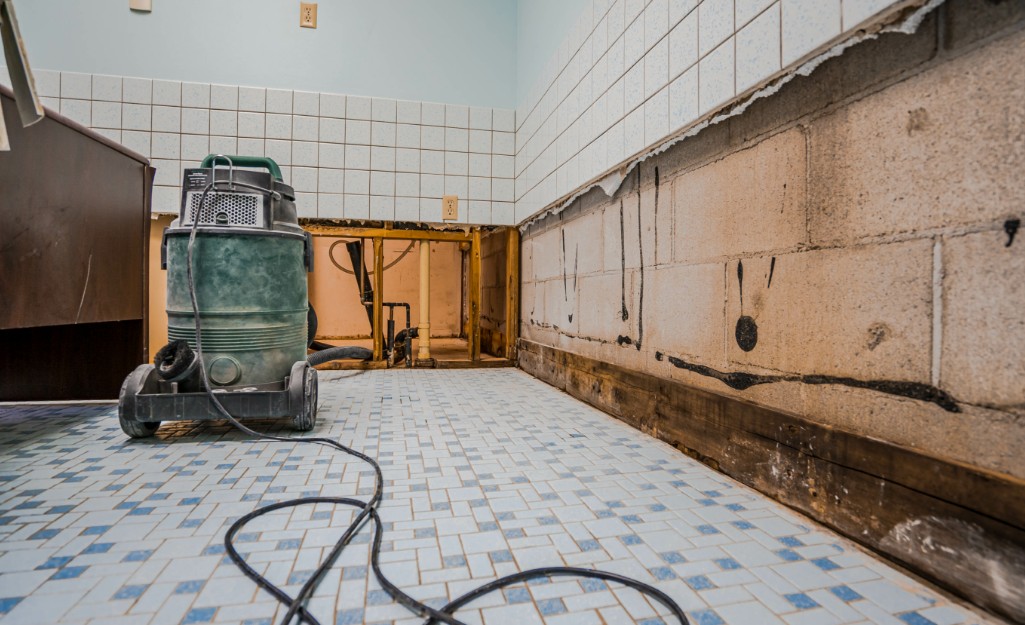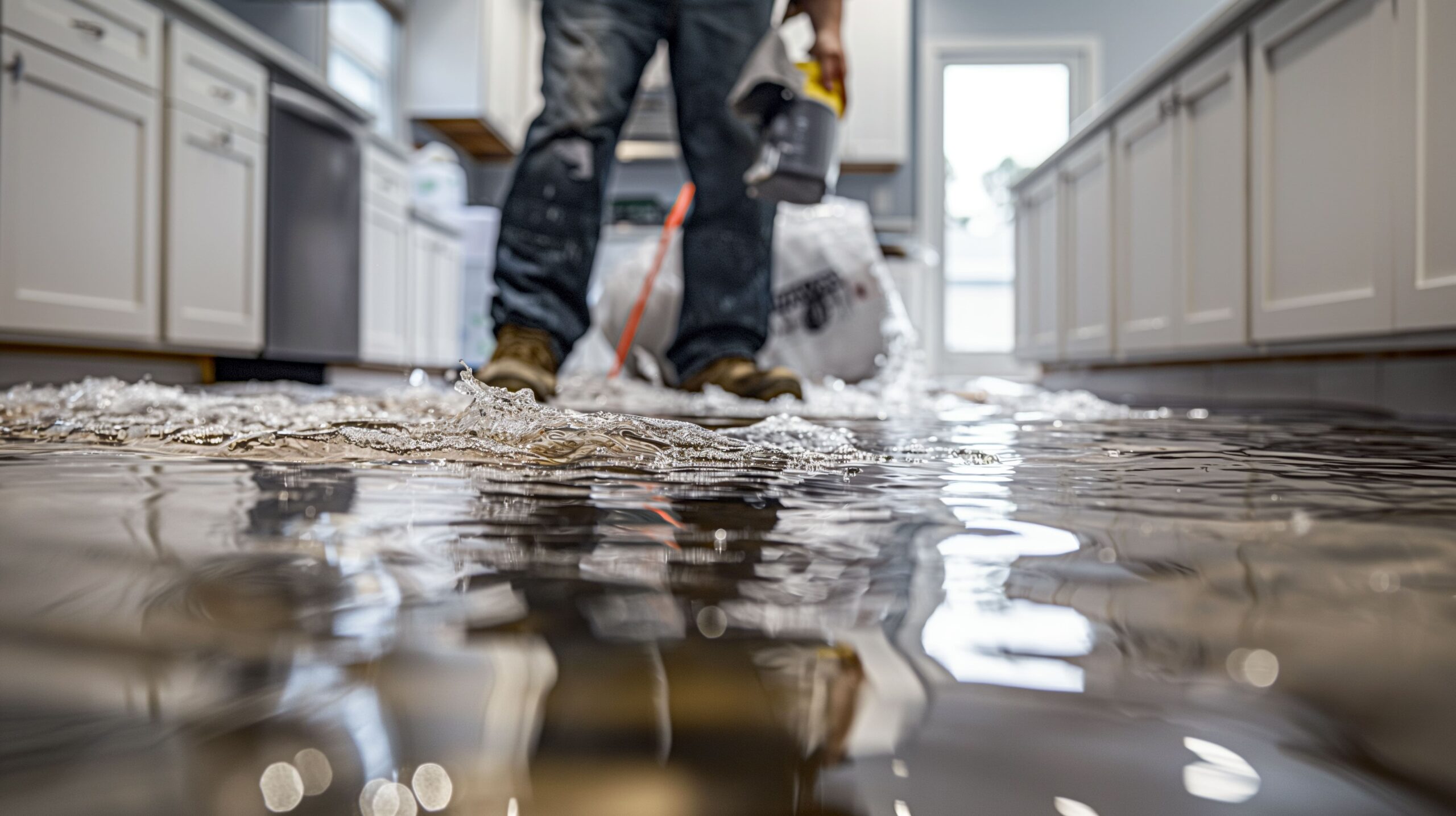Water Damage Restoration 101: Recognizing the Process and Price
Water damage can strike unexpectedly, leaving house owners in a state of complication. Recognizing the remediation process is crucial for reliable healing. From examining the damage to picking the ideal company, each step affects the general outcome and expense. Aspects such as the kind of water damage and seriousness also play a substantial function. What are the particular methods utilized in restoration, and just how can one plan for potential expenses?
Kinds Of Water Damage

Preliminary Analysis and Inspection

Water Extraction Methods
Adhering to the initial analysis, effective water removal strategies are utilized to minimize damage and protect against more problems. These strategies entail using specific tools such as completely submersible pumps and industrial-grade vacuums - Water Damage Restoration. The option of technique depends upon the volume of water existing and the type of products impacted. For standing water, submersible pumps are typically made use of for rapid removal, while vacuums are ideal for removing water from carpetings and furniture. In addition, progressed methods like water removal floor coverings might be used for hard-to-reach areas - Water Damage Restoration. The objective is to eliminate as much water as feasible, lessening the capacity for mold and mildew development and architectural damage. Motivate and efficient water removal is important in the overall water damage restoration process
Drying and Dehumidification Process
Once the water extraction is total, the drying and dehumidification process comes to be essential to restoring the damaged area. This phase generally uses industrial-grade dehumidifiers and air movers to efficiently lower moisture levels. The dehumidifiers reel in moist air, eliminating excess moisture, while air movers distribute air to speed up evaporation. Surveillance tools is usually used to track humidity and temperature level degrees, making sure suitable drying problems. The period of this procedure can vary depending upon the degree of the water damage and environmental elements. It is vital to completely dry all affected products, including wall surfaces, flooring, and home furnishings, to protect against mold and mildew development and structural damage. Proper implementation of this step is vital for a successful restoration end result.
Cleaning Up and Sanitizing Affected Locations
A thorough initial analysis and inspection of impacted areas is essential to identify contamination degrees as soon as the drying out process is total. Flood Cleanup Services. Reliable cleansing methods and proper products should then be utilized to remove particles and discolorations. Sanitization and disinfection methods are essential to guarantee that hazardous microorganisms are gotten rid of, restoring the area to a safe condition.
Initial Evaluation and Examination
Before starting any type of restoration efforts, a detailed initial assessment and evaluation of the affected areas are crucial for efficient cleansing and sterilizing. This process includes determining the extent of water damage, establishing the source of the water breach, and examining the products impacted. Assessors usually look for signs of mold and mildew development, structural honesty issues, and harmed valuables. The analysis likewise includes checking moisture levels utilizing specialized devices to guarantee no concealed water pockets remain, as these can cause more complications. Recording the searchings for is necessary for intending the following action in the repair process. A comprehensive initial assessment enables reconstruction specialists to develop a targeted technique for effective cleaning and disinfecting, eventually lessening damage and health threats.
Cleansing Techniques and Products
Reliable cleansing and sanitizing of water-damaged locations call for a range of items and methods customized to the specific materials affected. For porous surface areas like drywall and carpeting, removal techniques are important to eliminate excess moisture, complied with by deep cleansing with specialized cleaning agents. Non-porous materials such as ceramic tile have a peek at this site or metal can be cleaned utilizing commercial-grade cleansers that properly get rid of impurities. Vapor cleansing is one more effective technique, specifically for rugs and furniture, as it utilizes high temperatures to eliminate germs and mold (Water Damage Restoration). In addition, eco-friendly items are significantly prominent for their security and efficiency - Mold Remediation After Water Damage. Inevitably, picking the appropriate cleaning methods and products not only guarantees immediate cleanliness but also help in preventing more damage and wellness threats linked with water breach
Sanitization and Disinfection Approaches
When addressing water damage, proper sanitization and disinfection methods are necessary to guarantee the safety and security and wellness of the affected setting. After initial cleansing, surfaces have to be treated with suitable disinfectants to remove microorganisms, mold, and germs that grow in wet problems. Common techniques include the usage of EPA-approved chemical disinfectants, which can be used via splashing or cleaning strategies. Additionally, ultraviolet (UV) light systems can effectively sterilize areas by reducing the effects of microbes without rough chemicals. The option of technique typically depends on the sort of materials influenced and the extent of contamination. Inevitably, thorough sanitization not only recovers a safe space yet also aids avoid future health and wellness threats connected with lingering moisture and mold development.

Repair Work and Restoration Options
Reviewing the damage caused by water direct exposure is essential for establishing the appropriate repairs and remediation options. Property owners may deal with various concerns, including harmed drywall, deformed floor covering, and endangered architectural elements. Relying on the level of the damage, fixings might involve changing areas of drywall, mounting new flooring, or reinforcing structural beam of lights. In situations of severe damage, total replacement of affected products could be required. Additionally, specialist conservators commonly recommend utilizing dampness meters to evaluate hidden wetness levels before selecting the most effective strategy. It is vital to act quickly to avoid mold and mildew growth and additional damage. Picking the best alternatives not just restores the residential or commercial property but likewise ensures long-term safety and security and capability.
Variables Influencing Restoration Prices

The level of water damage directly impacts the repair costs house owners can anticipate to incur. Aspects such as the resource of the water, the duration of exposure, and the afflicted products substantially affect pricing. For example, clean water damage from a damaged pipeline is normally much less pricey to restore compared to damage created by sewage. In addition, the degree of contamination dictates the requirement for specialized cleaning and disposal solutions, even more boosting costs. Geographical area also plays a function, as local labor prices and schedule of restoration services can differ. The necessity of the feedback influences prices; quicker treatments typically lead to reduce general costs by stopping additional damage. Comprehending these aspects is important for house owners when approximating reconstruction prices.
The 3 main kinds of water damage are categorized based on contamination degrees: clean water, grey water, and black water. A detailed preliminary assessment and examination are important actions in the water damage reconstruction procedure. For standing water, submersible pumps are usually utilized for rapid elimination, while vacuums are optimal for extracting water from rugs and furniture. The degree of water damage directly affects the remediation costs homeowners can anticipate to sustain. Clean water damage from a busted pipe is usually much less expensive to restore compared to damage caused by sewer.